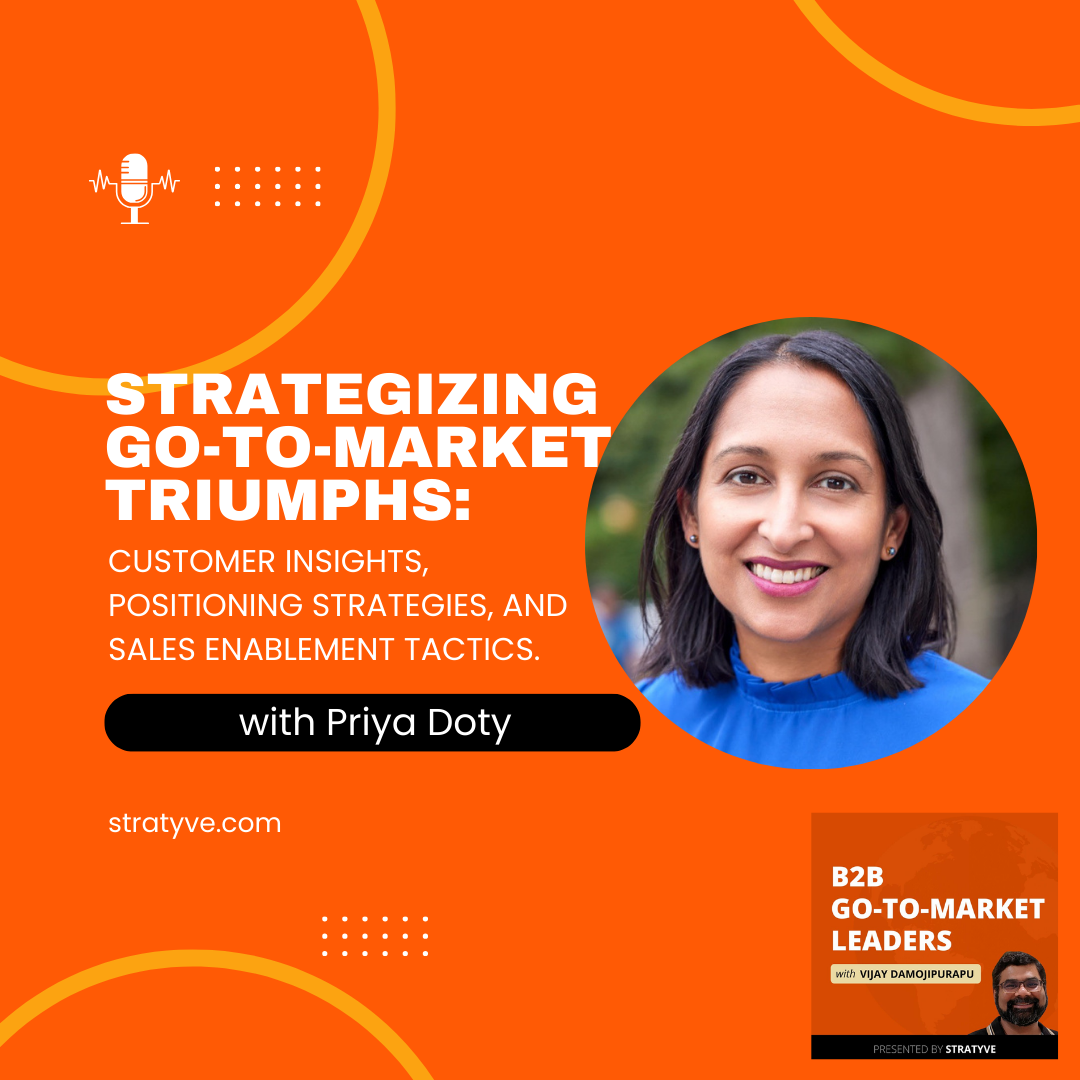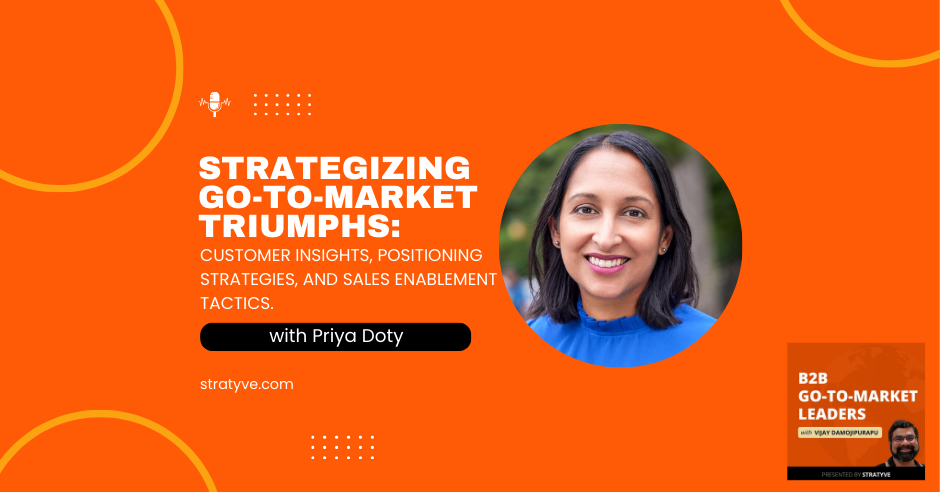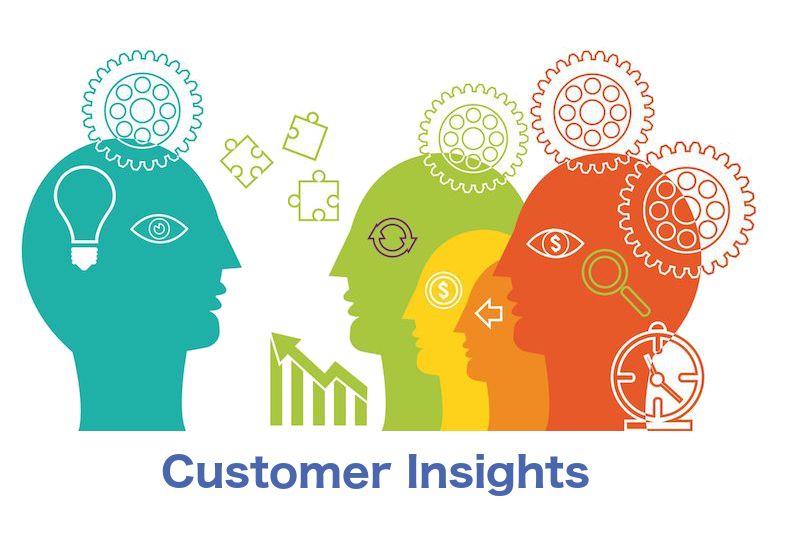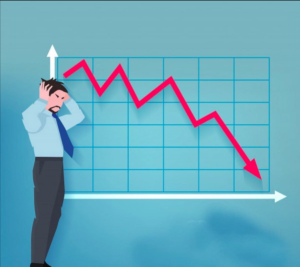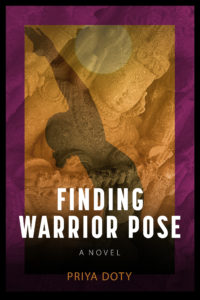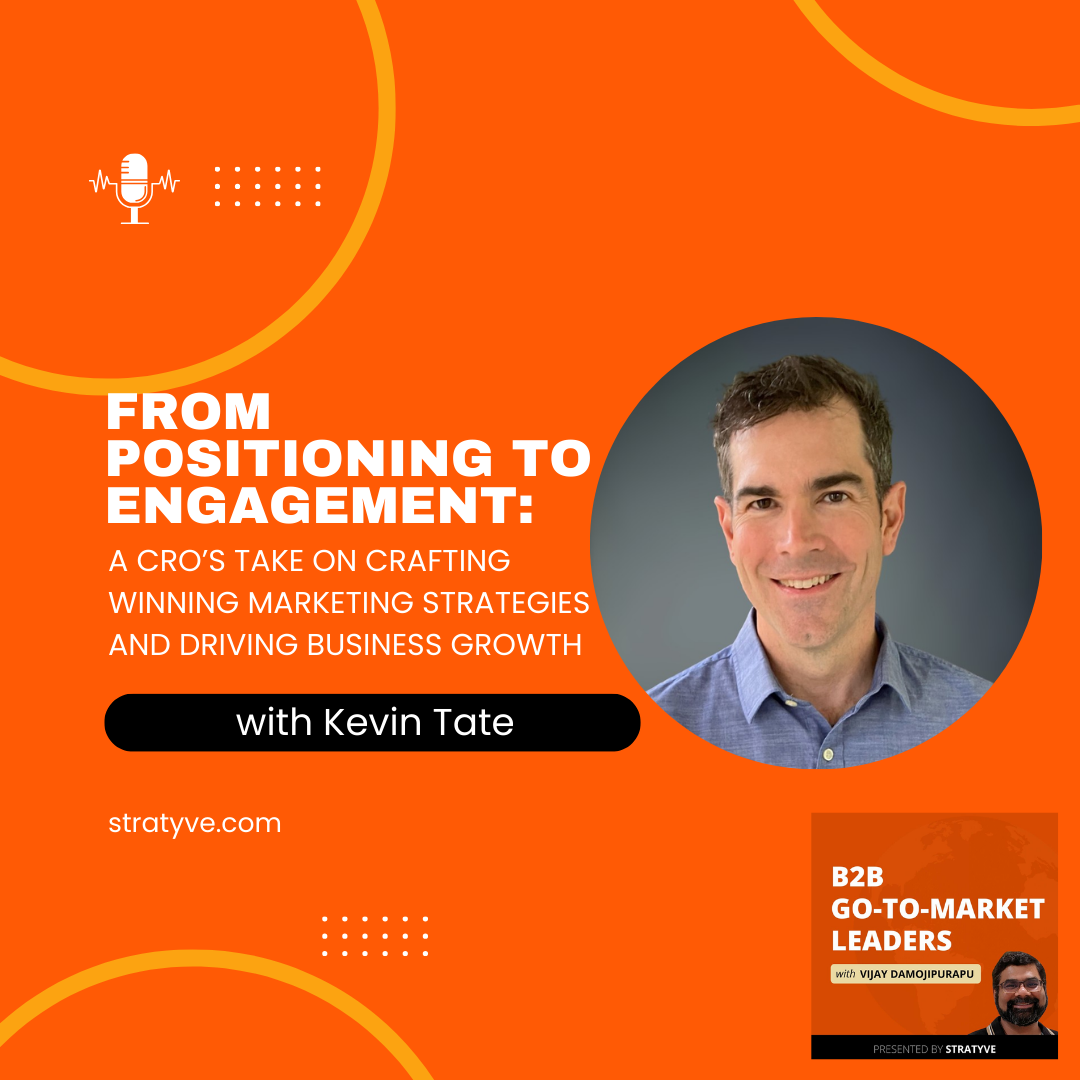
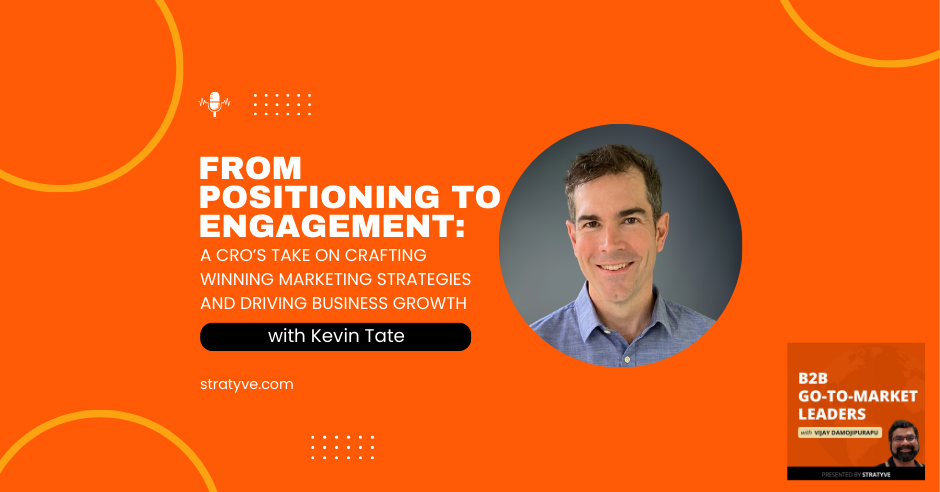
Want to navigate the ever-evolving landscape of go-to-market strategy, where every decision presents a new puzzle to solve?
In this episode, Kevin Tate, Chief Revenue Officer at Kivo and go-to-market executive with 25 years of sales and marketing experience reflects on the importance of patience in the marketing world, emphasizing the need for long-term strategies over short-term fixes, the importance of adapting sales approaches to virtual interactions, and The critical role of intuition in decision-making. From sealing big deals to tackling tough challenges, Kevin’s insights will inspire you to conquer your marketing hurdles.
Listen to the podcast here
From Positioning to Engagement: A CRO’s Take on Crafting Winning Marketing Strategies and Driving Business Growth
My signature question which my audience loves. And this is what I get started with, with my guests as well, which is, how do you view and define a good market?
Well, that’s a good one to start with. And again, thanks for having me. You know, it’s, I think it’s easy to get wrapped up in the day-to-day of go-to-market. And so it’s fun to kind of take a step back and think about the meta question. So what is go to market, I think of go to market as the combination of sales and marketing and business development activities that ultimately drive the business, right? And so there’s a bunch of people and activities that springs to mind when you say that, but I think it’s also it’s the strategy, and it’s the people and the systems and the budgets and the and the processes that support all of that, too. And so, I like to think of go to market as the front of the boat, if you will. But it’s also the rudder that’s trying to steer that boat, you know, through the market and navigate those waters. And so there’s a lot that goes into that.
I like that analogy. It’s the boat analogy. It’s pretty good. It’s very visual, people get that.
The time anyone’s ever used the boat analogy. I’m sure. So yeah, we’ll see. Um, that one. Yeah,
So you did mention sales, marketing, and biz-dev. Something that caught my attention is how there is no product or even customer success in there.
That’s a really good, great, and customer success should be in there for sure. But I think it’s one way I like to think about go-to-market and its relationship to the business and an oversimplification. But if you zoom way, way out on a business, you might describe it as making a compelling promise that the product can keep. And if you really just start, you know, underlining and taking apart all those different words that make a compelling promise part. That’s all the sales and marketing and positioning, and how do you start the conversations? And how do you, you know, couch, your feature benefits, everything goes into, and it’s, it’s got to be compelling, right, and you’ve got to be making it to people for whom it matters. And then that second part of the sentence that the product or service can keep, that is where I think about what the product actually does, how customer success delivers that value, how you’re able to structure the company to deliver it in a way that’s, you know, profitable, or keeps you in business, all the things that go into keeping that promise. And so like to kind of zoom back and think about it some level, that’s really, you’re gonna make a compelling promise. And hopefully, you’re gonna keep it and everything else is kind of in the service of that.
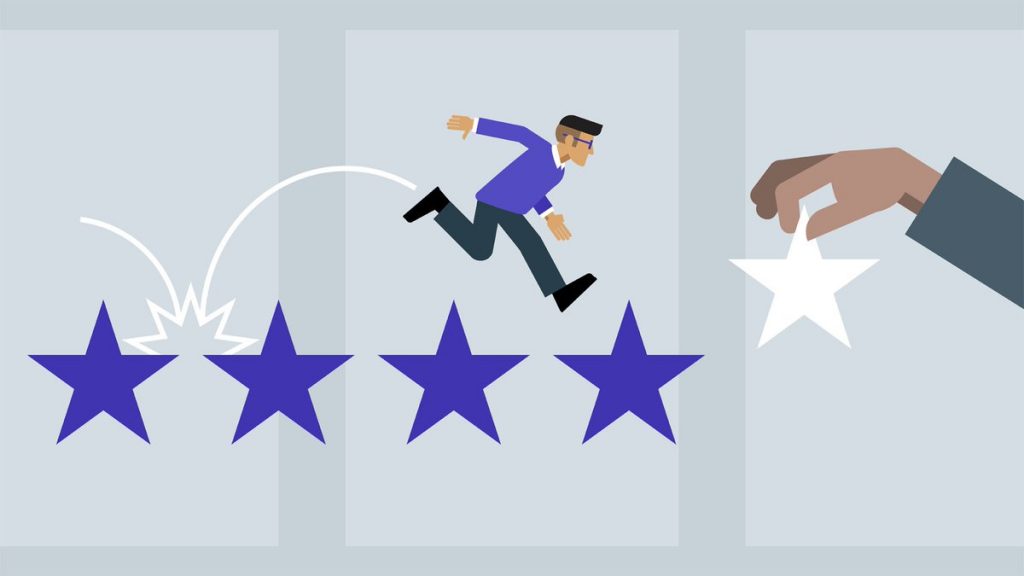
I like the way you structured it into tools, really simple concept. I mean, simple sense, as simple as it can get, but very hard to execute. Convey your compelling promise, and then keep the promise it’s those two things. Right. And that’s the go to market piece. And, yeah, I mean, listen to and I hear this conversation and topic and definitions from a lot of the guests. There’s no right or wrong answer for sure. I mean, a lot of gray areas. The only reason I keep bringing it back into product, or as you mentioned and pointed out it can be a service as well, is it starts with that. But some folks say that, yes, you do have to think about how you define and create the product or service. But how you go to market is not the product piece.
Well, your points are a great one too. And I think, especially in the last few years, I’ve done a lot of work with product-led growth companies, which is such an interesting point. So it mix of that right and how we think about the product, perhaps to sort of abuse my earlier analogy, the product in that way is making its own promise. And in fact, it’s trying to keep that promise through you know, what might be very little interaction from the go-to-market team. And so I think it’s it’s probably been heard some of these lines, especially compared to 5-10 years ago?
Yeah, for sure. So that’s a product lead growth, go-to-market motion that you’re referring to. And the other one that comes to mind is either in the very early phases like it’s just a concept or idea in someone’s mind. And then the go-to-market team, especially product marketing, if you have someone in Product Marketing, they would work very closely with the product in understanding and bringing the market insights. Right. So there is that piece of it’s not going to market but thinking about how we go to market, right from the early days.
Yeah. And I’m glad you brought that up. Because in the post, we’ll talk about this more. But I think of Product Marketing as really the crux, right? It’s sort of where the two parts of that sentence meet. It’s where you’re trying to, you know, every day and every week and do every release, and do every quarterly planning figure out how do I make sure I’m balancing that promise and how I keep it. So I love product marketing, I feel like it’s it’s the most fun.
Fantastic, I’m sure we’ll dig into that specific topic more because that’s very near and dear to my heart. Let’s zoom out a bit. Why don’t you share with our listeners, your career story, your professional journey along the way, and all the transitions? And what led you to what you’re doing today?
Yeah, wow, I know more about me. Well, so you know, I started as a technical solution consultant, and then also working very closely with product marketing, back in the early days of the internet, so I mean, like 96,97. And, and that was a really interesting sort of trial by fire, right, we were doing what was then called dynamic publishing, and then became known as E-commerce and, and to be at the center of that technical revolution and business revolution and getting to work with these companies who were really trying to figure out an input to work the promise and potential of the internet. I just kind of fell in love with it. So, I have spent my career now leading some versions of sales and marketing both for startup companies and stale and scale-up companies for about 25 years. And I found that I really like working on emerging markets, and fast-moving technologies, where those things are reshaping how work is done, or how value is captured. And, and it’s not clear how it’s gonna play out, you know, so even as a small company, you might have an opportunity to help figure that out and shape that. And that’s, that’s sort of what excites me.

Really cool. Yeah, I’m looking at your LinkedIn profile, clearly. I mean, your first job is very interesting golf pro international robot testing, budgeting.
And yeah, that was my very first startup. So I got out of school. And I started working with a friend I’d met. actually working at the coffee house that was building robotic golf caddies to carry your clubs around the course. incredibly complicated little things that never quite worked. But it’s hard to even talk about how sort of unreliable GPS and things like that were in 1995. But you know, I got to kind of do everything. I’m soldering boards, and I’m flashing EEPROMs and building robots and then putting on hats with antennae in them and going and showing the robots to investors. It was awesome. But and I and I got, again, a real trial by fire around, like, what Startup life and culture and technology was about. And yeah, that was that I think that’s really what planted the seed. And I got to work with really great smart people who were doing things that seemed, you know, maybe a little crazy. And so yeah, it’s super, super fun. And what you see, I think, is a version of that, that has now played out across a lot of different emerging industries. I’ve gotten to work in big data and the Internet of Things, in MarTech. And just recently, about six months ago, I made another kind of big industry move and got into life sciences and biotech. I’ve never worked in life sciences at all. And it’s been fascinating to figure out you know, what’s the same and what’s different in terms of how technology and business and productivity work together and Life Sciences?
I’m sure we’ll get into that. But something that caught my attention is you study a career in sales and then something got in your mind where you got pulled into or you went to the quote-unquote dark side the marketing
I liked it the marketing’s the dark side in this scenario. Yeah, you know, that’s a good question. And there was a pretty specific turn there. So we were in the Bay Area for many years and then we left in 2003, I moved up to Portland, Oregon, where we are now maps behind me. And then I got a job at a company called a unit crew working for the VP of marketing there, Chris Reid. I had thought I wanted to be in sales or business development because that’s what I’ve been doing for a while. And Chris sort of enticed me with a very smart and very strategic approach to how you run and lead the go-to-market motion by industry. So I got hired to run the retail industry, which was the largest for our hiring
management system. And that really opened my eyes to how much of the strategic positioning and messaging and role that marketing played in working with sometimes even leading the sales and go-to-market motion and that sort of symbiotic relationship. I really enjoyed that. He was a great, great person to learn from. And I feel like, since then, I’ve not had a role where marketing wasn’t sort of front and center, even if I was running both sales and marketing.
Very cool. Yeah. And very impressed. I mean, you, as you mentioned, right, you work at small companies, startups, you’ve looked at really large companies. I mean, I see big brands in there. Kronos. Yes. And then SurveyMonkey. Yeah.
Survey Monkey. And yeah, it was clear a bit recently, which was just acquired by HubSpot. So yeah. So small companies and big companies and companies.
Yeah. And then clear video, the CMO at Clearbit. Anyone and everyone in sales and marketing know they should better know what Clearbit does clear bits. Great. Very cool. And then so what do you do today? You mentioned you are at Kivo.
Yeah, so I jumped into Kivo, which is quite a startup been around for a few years. But it’s a productivity software for life sciences companies, specifically teams that are developing drugs, or medical devices, and bringing those drugs to market, which involves a lot of working with regulatory agencies, and managing clinical trials and, and doing all that with a level of precision and compliance. That is super important. That means there’s a lot of documentation and process and audit trails, which software really helps with, it also happens to be an area where it was paper for a long time. And the electronic or online solutions that a lot of teams are still using, were some of the first that came around. So a lot of people are still using solutions for this that were, you know, came out before the iPhone was invented. So there’s a real opportunity to bring new tools and intuitive, intuitive solutions to it. And that’s that’s what we’re doing at Kivo. So it’s been super fun. I’ve had to learn a million acronyms. It’s been such a learning curve for me around life sciences and Regulatory Affairs and all the things that go into that work. But that’s kind of what I like, I like diving in and understanding how this business, this segment works. And now how do we take some of the things that we’ve learned and, and use that to make it work better?
Yeah, so Farmar regulatory, it takes me back to I think, when I was doing my internship or a project, while I was at Cornell University, doing an MBA internship project was around, I think, working with a pharma company who were doing their clinical trials. Oh, yeah, helping them or recommending a go-to-market?
Oh, wow. Yeah, you are in it. You’re in it. You know, how complicated these trials are? And how long do they take?
Yeah, you know!
And that has been an interesting thing, you know, probably a bunch of different vectors to look at life sciences versus some of these other industries. But let’s take the last two. So when I was at Clearbit, working in the market, a lot of times the companies that we were working with, and the timescales on which they were thinking about growing their business and making investments in technology, we’re quarters, right? I mean, you know, we need this because we’ve got something planned. And so you are often talking about their plan in terms of quarters, perhaps years in, in life sciences, it takes 10-15 years a decade brings something from the lab to the market. So it’s just a completely different timescale. And there’s so many chapters that happen for those companies, and the teams and the technology and the priorities. And so that’s been an adjustment for me understanding the timing of when, when those things are a priority, and how you know, systems like chemo can help when so yeah, it’s been fascinating.
Now, that’s a good seg. That is going to be my next topic, which is who you serve. Who are the customers of Kivo? And how would you think about the go-to-market for Kivo?
Yeah, sure. So, yeah, from a market segments standpoint, think of it as you know, these emerging, so say, I don’t know, less than 200 person, most often in Pharma and medical device companies. The personas are fascinating because typically it’s the leaders of the regulatory team and the clinical operations team who are working on those clinical trials and working with partners on that. And then the quality team and quality, the management of quality and processes, and is so important in this industry. And so usually those three personas are who we’re working with. Now, it’s what keeps it interesting is, that depending on the size, and stage of the company, you could have one person wearing all three hats, or each of those could be many person departments, each with their own budgets systems, and priorities. And so a lot of what we end up doing is trying to figure out where are you on that journey. And what are the systems or processes you’re using today, and how they’re helping you or, in a lot of cases getting in your way as you try to work together? So a lot of our go-to-market is kind of back to what I said before about some of the older technologies, a lot of it just trying to show what’s possible now and finding ways to when the time is right. Get some attention from one of those roles and say, Hey, did you know you could be doing this, right? Because this is really different than what you could do even five years ago, much less 15 years ago. And, so that is often how our conversations start. And so I’m trying to, you know, how it is when you’re running marketing, you’re trying to find the tea leaves and figure out what’s driving that our VP of Marketing Gianna at Kivo has done such a great job of instrumenting our funnel and awareness and lead generation activities. And so, you know, she’s able to bring to us, okay, this is how we’re getting on different radars of these different personas and starting these conversations. And of course, what’s the, you know, what’s the cost structure and the, you know, customer acquisition cost profiles and all that. And it’s, she’s been so great to work with on that. And then I, as I take that to the sales side, I can say, Okay, well, and then what happens with those conversations? And so, yeah, that’s a bit about how we go to market.
Very cool. Something that it’s related to one of the guests that I had recently on the podcast. So he started a company, a startup, using AI, so he could help streamline the whole clinical trials process.
Oh, yeah, what company was that?
The company, like I can share more details offline. That’s cool. And while talking to him, he was talking about all the challenges, essentially, with those same personas that you mentioned. And by doing that, he also mentioned about, again, just going back to one of the channels to explore, what he started doing or posting on LinkedIn. I mean, he’s he goes to events, he meets does the best, he speaks there, and so on to drive awareness and bring attention and build a pipeline, something that really caught his attention of late is posting on LinkedIn. Now, prior to my conversation with him, I would imagine anyone from the far mine regulatory and regulatory roles to be active on LinkedIn. But to him is seeing traction on LinkedIn even for traditional.
Yeah, well, we are as well. It’s so funny. We were just looking at this yesterday, as we think about our go to market plan for 2024. And, you know, the value of social advertising and awareness debate would take us many, many podcasts. Right. But I think what we’re seeing, which we saw in Martec, as well, is that for awareness and being in the consideration set when the time is right, LinkedIn, I would say LinkedIn more than other social channels. I mean, I think people see some types of success with you know, Instagram or Facebook, I think with LinkedIn, that is where the earliest mindshare opportunities are in the funnel, and being and creating that awareness. For us. To your point, the timing is so important. And so I don’t know when it’s going to be time for a regulatory Regulatory Affairs leader to think about a new system. It could be this year, next year, the next year, but I do hope that when the time is right, they’ll think of the key though, and we can be a part of that conversation. So we think of LinkedIn and that as that, by contrast, I don’t think of LinkedIn as the place to try to drive people to your form to you know, start a sales process. It’s just, it’s just not quite a CTA environment or call to action.

Yeah, for sure. I mean, as you and I know, it’s only maybe 5 or Max 10% of your target audience and the segments in the quote-unquote, demand capture phase. Yeah, I mean, 90% of your target segment and audience and personas are not even looking to buy.
Yeah. I do think also, to your point, though, it’s where the conversation is, and not to get all, you know, 2010, 2012 with our terminology here, but as we think about joining the market conversation and being a part of, of going to where the people are, that’s where the people are. And so, finding a way to do that in a way that’s genuine, and isn’t just, you know, looking for an opportunity to say, that’s great. If you heard about Kivo, you know, that’s what we tried to, and actually be a part of the real conversations and the things that people care about in the industry, and then, you know, trust that you will also be a part of the conversation when it turns to solutions.
So for sure, very cool. Yeah, this has been great. So yeah, I mean, a lot of great points and directions that we went over there. And to your point earlier, right, you mentioned you didn’t want to go into more like a 2010-2012 conversation. For me. I mean, this is where I feel that not just marketing, but even go-to-market teams are not thinking in terms of basics. At the end of the day, all these are basics. Versus go-to-market teams are so much under pressure of hate, deliver, deliver, deliver, we need to hit metrics.
Yeah!
Versus someone who’s really thinking, okay, yeah, I can make all those phone calls or send all these emails. But then let me take a step back and try to understand again, going back to your point, where does my audience really hang out?
Yeah, right.
Yeah. And I think you’re ready to get someone on a call. It says, It’s not about me, it’s about them and serving them, and guiding them to my brand.
Yeah. Well, but it makes me think, oh, and I’ll nerd out on this for a minute, if you’ll if you’ll forgive me. But as marketers, especially in performance-driven markets, we so want the spend, and the results to be deterministic and linear. And it’s easy to say, Okay, I spent all over here and I got dollar 50 out, and at some level, that does need to be true. And certainly, you want to do the metrics by channel and so on. Right. At the same time, I think in my experience, and we were just looking at this and Kivo, we’ve been fortunate we’ve had a very large increase in our pipeline, and our prospective opportunities.
And when we look at all the things we did, it’s all the things right, it was the show and the launch, and the webinars we did and the social momentum and the advertising. And there’s an emergent property of that, that is momentum and buzz and pipeline. And so I don’t think it’s entirely you know, well do all the things and hope it’ll just, again, emerge. But it’s also not entirely deterministic, it’d be very hard to take that apart and say dollar by dollar, which led to a deal that didn’t, so I think embracing that a little bit and saying we’re going to, we’re going to push in the right direction and trust start the right kinds of conversations. And we’re going to do with confidence in the channel in the spend. But we’re also probably going to be a little surprised at what pops and what doesn’t and that’s okay.
Yeah, exactly. I think yeah, just to close out on that, again, not to another on this topic, right? I mean, a couple of things to keep in mind, especially for marketing and even sales to doing some of the lead gen, or demand gen programs, a couple of things is to carve out time and set aside at least three months, don’t expect to see movement week or week or month or month, at least three months.
Yeah!
That’s one thing, and really wish and hope and pray that you have a CEO and a CFO who will stand by that mindset that you cannot measure each and everything and show hey, here’s the ROI.
Yeah, the position you’re absolutely right. The patience piece is hard. And I think we’ve all been in situations where you find yourself despite best intentions, sort of week by week, you know, hand wringing over the numbers and say, well, and then you start trying to change and pull levers to your point weekly, and it’s things just don’t change weekly. And so making sure you go to your time scales and the patients and support them is super key.
Yeah. Very cool. All right. Switching gears here. We’d love to hear your take lessons and reflections on a go-to-market success story. And go to market failure story. I’ll let you pick which one you want to go with. But if you look at either Kivo or even your previous role, yeah, a success and a failure story.
Okay, so I’ve got two that that kind of kind of fit together and are top of mind because literally happening this week. Yeah. So one company found Kivo and loved what we did online set up a meeting and had two meetings with them. They signed up for a year-plus subscription all within eight days. That and yeah, and we have a relatively significant average deal size so that was just fun to watch. Right? You know, call it product market fit and timing all fitting together. But from a marketing standpoint, go to the market name put something really satisfying about just click Yep. You know that, that that’s what we are, that’s the promise and that’s fulfilling it. Yeah. Same time working on an opportunity where if we go back to our three personas, one of those department leaders brought us into an opportunity. And because Kivo serves sort of all three. Now we’ve got all three departments and this pretty sizable company. Now they’re all in the conversation. So picture 16 people representing four different departments, including IT, all with different agendas and budgets and existing
systems and overlapping timelines. And, that’s not to say there isn’t an opportunity there. But as a go-to-market leader I’m very much aware of, okay, we’ve really increased our surface area and the complexity of this. And I can kind of hear that original person saying, I just needed XYZ, right? And so I’m trying to really internalize that and think, Well, how do we balance it? Sure, it’s great to have deals with more, you know, more surface area, larger customers, and larger, larger opportunity, but not if it introduces the cost and complexity that slows everything down or even kills a deal when you could have just solved someone’s need in eight days. And so really trying to think about that and from a positioning and packaging standpoint, and, you know, does that mean, you need to take a unified product and really talk about it as component, parts, even if technically, that’s not as if that’s not required, but it makes it easier to buy based on how companies are structured. So those are some of the things we’re really internalizing as I look at. Yeah, what’s a challenge and an opportunity? That’s become very complicated.
That’s your success and a failure. It’s not a failure. It’s more of a learning story, I would say.
Yeah! Frustration. How’s that one? Actually? Yeah. Well, we’ll circle back in two months. And I’ll tell you whether or not it was really a failure. I hope not.
Yes, for sure. That’s a good one. And then anything that comes to your mind, jumps out from your time at Kivo.
Gosh, you know, we worked with so many clever, and it continues to work with so many smart and innovative customers there. I will say one of the one of the things that was fun to watch. And there’s still a bit of, you know, Alchemy required to do this. But we got to see companies and discos in the success category, got to see companies use a combination of really good company data, which was the role that Clearbit played to personalize the website experience, a little not overly done, you know, not like hey, VJ, welcome back. You’re here on Tuesday, and it’s super creepy, no, but like in just a, hey, you’re a small company, I’m going to show you small company stuff, you’re a big company, I’m going to show you big company example. And then match that with a level of personalization on the outreach and follow-up. And really smart awareness targeting through the social channels. So you know, people from that company that are enrolled, let’s make sure we get some Eric, they really stitched it together through a combination of precise data and smart targeting of the systems. And it had a huge effect. And back to that kind of emergent piece, it’d be very hard to say exactly which part made the 5-10 x difference. What I saw a 5-10 x kinds of differences and the effectiveness of people spent and that was really cool to see. So I guess I’d say there’s, as much as it feels like, a lot of these spending strategies and optimizations have been at play for a long time. There’s still a frontier out there, where really good data personalization and targeting can make a huge impact.
Yep, and that’s a holy grail in marketing. Right? I mean, showing the right message to the right person at the right time. Take the right action.
Right.
Sounds easy.
It sounds easy. Yeah. But it is it is very hard to do at scale, as you well know. So yeah, for sure.
Going back to product marketing, I know we briefly touched on that early on in our conversation. So going back to product marketing, I felt that glow or that energy pop up when you brought up the term product marketing.
So yeah. For me, I guess it’s when I think about product marketing, that I think about the positioning and messaging of both the company and the product, right? And this, you know, this sort of tall ladder of how given the market situation and the buyer psychology. What space do you want to occupy, if you will, at the company and the product and often at the sort of sub-product and component level, and really trying to stitch that together and figure out how to tell stories around that and how to make those stories interesting. You know, there’s almost always this part where you go through that whole exercise and you get down to like It’s this four bullet point, you know, it comes down to our reliability, scalability and flexibility and like, oh, sweet, and then you look at the next day, like, that’s the most boring three words in the world. Okay? We tell an interesting story now like, what is it? Who cares? Why does it matter? And so, for me you know, it’s kind of a never-ending puzzle of unlocking curiosity in the buyer’s mind, even if they’re not actively looking for what you’re you’re, you know, offering them just curiosity that will last so that actually were saying earlier when the time is right. They go: Oh, yeah. You know, Kivo piqued my curiosity. Curiosity is so much more powerful and Kivo appears to have reliable and scalable infrastructure. That’s just, so anyway, yeah.

For sure. I mean, the way I think about product marketing is like 6 or 7, 8 categories, you have the positioning and messaging. Even prior to that is the customer insights.
How do you have a solid customer insights program? Yeah, and then following up to that, depending on your if it’s if your sales lead, you’ll have sales enablement? Yep. Then there is the new product launch. There’s a new market entry or market expansion. And continuing on that spectrum, you have product content, product at auction, and even then customer expansion.
Yeah, yeah!
The entire spectrum.
And they all fit together, and it never ends. And it’s all overlapping. I mean, there are so many fun ways to try to structure or bring a lens to that to that activity. I often go all the way back to Crossing the Chasm for some of this positioning, and this, of all the things in that book, I think this whole product concept is a really powerful one. And one that again, just sort of never goes away. And being honest with yourself about, you’re never really presenting the whole product, the customer always has to bring something to it. Even if it’s only the energy to learn how your product works. They are part of that recipe. And just the more honest you can be about what it feels like to be in their shoes. I think the better and, and that’s at the heart of I think a lot of the best product marketing.
Yeah, for sure. And glad you mentioned Crossing the Chasm. I think that’s a classic book for anyone in the go-to-market.
It’s a good one.
And yeah, I mean, just a side promo. I had Geoffrey Moore on the podcast,
Did you really?
Spoke with him a couple of weeks or about a month ago. And his podcast is going to come out next week or two?
No way. Oh, wow. Well, now? Now, I feel really honored. Thank you for having me.
All right. Now this is a good whole product. I mean, so many of these things. So coming back to product marketing. So where do you think are the one two or three challenges in those six, or eight categories that we mentioned specifically when it comes to Kivo?
So it’s a good question. So one of our biggest challenges slash opportunities, kind of back to the legacy systems, and how much things have changed with respect to these online tools are people not necessarily knowing that new options are available. Right. So a lot of the there without, you know, getting into deep specifics, there tend to be a bunch of sort of do-it-yourself tools or file sharing things and ways of organizing using spreadsheets. And then there’s a handful of big, big enterprise systems that cost you know, six figures and take six months to implement. And they’re there for a long time, there wasn’t much in between. Key offers a different path, we offer a fundamentally different approach to this thing. So that’s kind of number one is like how do you, you know, how do you find the right way to say, hey, there’s something new over here and this and maybe, maybe you’d kind of written it off as well, one day, we’ll do that they could be today because there are new options available. So So that’s, that’s a big one. The other is, I think, finding ways and I think it is challenging and complicated, especially workflow-driven, like b2b product, how do you bring those real differentiators are really, you know, cool, cool bits? How do you bring those to the front of the conversation? Right? How do you find a way in the second sentence, or even the first sentence to say something that someone Oh, how do you do that? Right, again, sparking that curiosity? Because so often the first six sentences are yes, yes. Yes, of course, you have part 11 compliant document management e-signature, and yes, of course, you generate audit trails that didn’t collect you just so how do you how do you skip to the good part? Right, generate some curiosity and then come back. And you know, in the case of Kivo, these are very complicated systems and processes and to a point before, we’ve got at least three real personas that we’re talking to, and they have different hot buttons and different things. So how do I, how do you plant those seeds or spark that curiosity across those personas, is it an interesting thing to think about?
Yeah, no, for sure. I mean, it goes back to, I would say it starts with a customer insight program, constantly being in touch with those different personas in the case of Kivo. And then tying it back to positioning and messaging and seeing what is resonating and what is started instant feedback.
Yeah, I will, you know, and to that point, and this is something I’ve been thinking about a lot recently. So in previous roles, you know, just to pick on one, one of my roles, I had 85-90, folks on the sales team, we’re all using, you know, online, online meeting software, the records and tracks everything. And so in the back of my mind was always, oh, I really need to, you know, make time to watch those recordings and listen to what customers are saying. And there was never enough time to and we tried and to your point, you create a customer insight and feedback loop. But it’s all very abstract, right? And it’s sort of oh, look at the themes that are coming up. And it’s really hard to get a tangible visceral sense of Kibo. Like I said, things are very busy. I’m talking to Alan about customer calls with the product, and hearing what they think about it 15 to 20 times a week right now. And it’s incredible. I mean, just the sheer amount of, you know, pattern recognition, opportunity and like, what lights them up and what confuses them, and what’s unexpected, and what seems to be a gap. So, you know, I don’t know quite how to bottle some of that. But I think perhaps stating the obvious there’s, there’s really no substitute for just time spent with prospects and customers in front of the product together.
No, for sure, I think that was my biggest lesson, I took the end, from my first product marketing role about a decade or more than a decade back at Microsoft we can structure a perfect pitch deck. In fact, it takes me reminds me of the conversation I was having with my boss. He was like a product marketing director and he said, go test it out with the first sales. I mean, not first, but the topmost right for him. And I go talk to him. I mean, within five years, he just cuts me down. He just cuts my ego and says, By the way, do you honestly think you can pitch and get a customer to not follow you along? Seriously? Yes, put me in the spot. That’s great. Right. I’ve been there. I’ve been there. Actually. Customers. Yeah, I mean, sitting in Delhi, you can only think and craft.
Yeah, no, it is. It is so hard. But also it’s what makes it fun. Right? So yeah.
Exactly. Pretty cool. Ah, yeah. Let’s see, what are like, the one or two things that people reach out to you for Kevin, I mean, in terms of, hey, I’m struggling with maybe some parts of God market or marketing or something. And then they think, Hey, Kevin, he’s a great guy, I need to reach out to him.
You know, I get pulled into the positioning and messaging piece a lot. So I’ve had a couple of points in my career where I was doing, you know, some independent consulting projects. And that’s a lot of what it tended to be, hey, we’re, you know, we’re so close to it. We’ve kind of got we’ve got the curse of knowledge here. Help us understand quickly. What does the market look like? What’s our position on that? What story? Are we really telling? How different is that story? How could we shape it in a way that, again, isn’t making a promise we can’t keep but boy is a lot sharper? In terms of the conversation that starts, I’ve gotten to do a lot of that work. It’s hard work. You know, it’s sometimes it feels like the answers are more insightful or actionable than others. But I really enjoy that work. And, and it’s so different. Well, on the one hand, the components and the specifics are so different based on the market and the product, but on the other hand, is sheer just cycling, so the fundamentals and the structure are often very much the same. So you get to do some pattern recognition.
Yeah, for sure. I’ll see that as well. Right? I mean, people pull me in and as you in your previous roles as an independent consultant, they pull you in, because you’ve got that external perspective, and they don’t have the and you don’t have the curse of the knowledge. That’s but the challenge is, we can guide as consultants and advisors we will guide but at the same time, it takes months and quarters to see if it’s resonating or not.
Yeah, no, it’s true. It’s True, and perhaps your experience has been the same. Rarely, you know, just a super generalized rarely is the answer from that exercise, hey, you need to tell a bigger story to more people about more things, it’s almost always you need to zoom in on this part over here for these and spend twice as much time on that, which almost always comes with a Oh, but you’ll have to give up these types of deals or this that and it’s really hard to make those, you know, Do this twice as much and this half as much kind of decisions. But it’s almost always that right?
Yep, for sure. Again, takes me back to the conversation. I was having Geoffrey Moore and he was on the board of one of the companies and I asked him, Okay, what changed? And why did the trajectory of the company change? And he said, to your point exactly that which is the CEO took a bold decision to say, hey, we will not go after XYZ and only focus on a specific segment and persona.
Yeah, those are hard choices. Those are hard choices. There is a book that comes to mind. Richard Remelt has written a couple of books. Now the first one was good strategy, bad strategy. His most recent one was called the crux. He may have more, but I think they’re great. And what I really like about them is the cut right to this is going to be the hardest part. And all the other stuff you kind of talk about because you’re avoiding the harder part. You know, like, Oh, do we wish they just talk about the hardest part? Because once you’ve got the kernel, as he turns it into a good strategy, or you’ve understood the crux of your primary obstacle to achieving that strategy, everything else kind of falls into place. So a big fan of his books.
Very cool. And then when it comes to again, go to market, what are a couple of things that are keeping you curious or interested? I mean, yeah, I mean, we know ChatGPT and everything.
One thing that I have been thinking about recently and haven’t had time to think about as much as I’d like is I feel like selling over Zoom, or Teams, or whatever, which is 99% of it now and B2B has changed, has changed the game more than we realize, or perhaps in ways we’re really just starting to realize, right, because they’re not like face to face, knees. They’re also not like being on the phone. And so the way engaging your presentation is, how engaging you are, how you choose to spend that time whether or not people have their cameras on how you architect a sales process, and the role that these meetings play and the role that follows up play. It’s, it’s all been rewritten. And you know, whether you’re taking a challenge or sales approach, or you use something like the Sandler method to do great discovery, like, all those smart approaches need to be sort of readapted for what is a zoom-based selling process? And I feel like we’re still really early actually, in internalizing that and putting that to best work.
No! For sure, especially when it comes to the smaller deal size and the mid-market. deal size.
Oh, yeah. Right. Yeah. And the difference for your company, if you can close, say, 15-20k deals in 1 meeting versus 2 or 10 meetings is huge. That’s a How do you do that? And, and so anyway, I just feel like that’s, I haven’t read that book yet. Like, what’s what’s really happening now in the way that people buy and sell?
Very cool. And then, yeah, I mean, heading to more of the finish line, and last couple of questions where I know you need to jump on to other things. So you did mention one person, like, I believe, I don’t recall his name, but he was an EVP or VP. Yeah, who shaved your career? So who are like the one two or three people who really played a key role, like a mentor or someone you look up to? And go back to maybe?

Yeah, it’s a good question. I think. Without a doubt, the company I mentioned that I spent seven years at during the early days of the Internet was called Fort Point and Fort Point Partners, and the brothers who were the CO CEOs, Matt and Jamie Roche were incredibly influential. I mean, I was there from 22 to 29. And they have taught me how to be in business. I didn’t realize that at the time, but they also taught me how to be respectful of customers build meaningful teams, and help people have lives at work. And so, so that was a huge influence that I didn’t even appreciate until I was a little bit older.
I think another person, I have to call out through this, this journey through all these different companies and stages and adventures is, is my wife, Jen, she, you know, because what same thing kind of happens every time right? Dive into some new company, a new industry, and all excited about it, I’m gonna learn this whole thing. And then you’ll fast forward, you know, four or five, six months later, I’m just beating my head against the wall, because I’m really trying to figure out this position and make a mark, you know, and she, one is very supportive. And says, you know, by the way, you chose this, you choose this every time you like this part. Yeah. Don’t forget that you like this part. And then and by the way, you can do it. And so she’s been an incredibly helpful and supportive partner through what has been, you know, a lot of different careers packed into one career.
So very cool. Very cool. So when this podcast episode comes out, make sure she listens to this.
There you go. Thank you.
Very cool stuff. And then yeah, the final question for you, Kevin, is if you want to turn back, clock, turn back time, and go back to day one of your go-to-market journey. What advice would you give to yourself?
I think I’d tell myself to follow my intuition a bit more, or not be afraid to follow my intuition. And, and by that, I don’t mean that I was right, more than I thought. It’s not that it’s more realizing that especially in the scaling companies and these emerging markets, there’s such power that comes from the conviction of saying, we’re gonna go that way. And here we go. And that has a huge impact internally, and also externally, as companies see your conviction and direction. And then it’s, it’s too easy to get kind of stuck, even paralyzed and trying to figure out exactly which way to go when you’re only 70-80 %. Sure. And I’d tell my younger self. Yeah, 70%. Just go. And that client gets a 100.
Yeah, for sure. Intuition. And funny, you said that the reason for being off late, maybe over the last 6 or 12 months, I’ve been doing a bit of reacher research and study around how people build intuition. And it comes down to a couple of things and principles, right? One is, at the end of the day, you’re building pattern recognition.
Yeah,
Based on the data and output or results and experiences. Early on in your career, you don’t have that much to build off of, then maybe over the next decade or so after you start your career. That’s when you start building your own instincts.
Yeah, yeah, exactly.
Right. I mean, you can learn and research and accelerate the learning from others. But that end of the day, it’s I mean, it’s almost bringing to my mind. It’s like a machine learning model.
Yeah. Yeah. Well, and to your point being, having the confidence or the opportunity early in our careers, to just say, you know, I don’t know, I haven’t seen this entity before. I’m gonna go ask someone who might know. And that’s okay. You know, being willing to ask for help and ask for advice, which you know, is sometimes hard to do.
So, very cool. Excellent. Thank you for your time. Wonderful conversation. Kevin. Thank you and good luck to you and the team at Kivo.
Thank you. Thank you. Thanks so much for having me.

